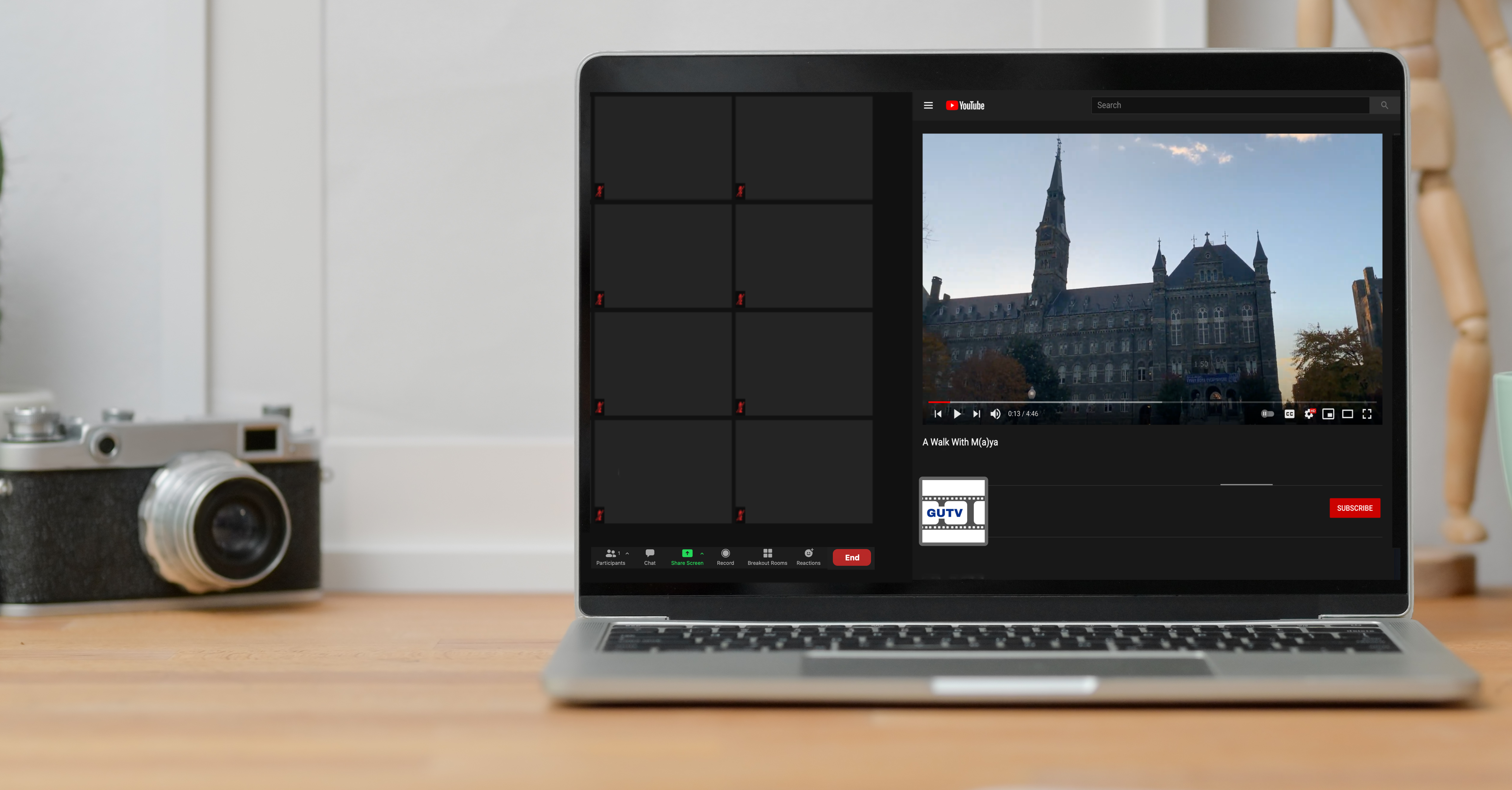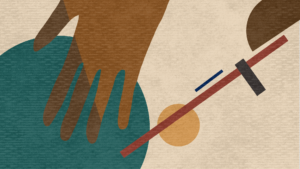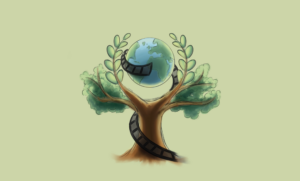While film production struggles to ramp back up on Hollywood lots, Georgetown student filmmakers are finding ways to capture their own tenacity on camera through homemade documentaries.
On Feb. 9, Georgetown University Television (GUTV) premiered scenes from a semester online: the Hybrid Hoya Documentary Series. The series showed short reels from documentaries by student filmmakers, bookending each screening with question and answer segments.
Ten Hoyas made six short documentaries, spanning topics from new hobbies and distance learning to love and friendship during the pandemic. Despite their varied subjects and approaches, each film articulated how students are feeling in this anomalous moment in time. “We have people all over the country and the world right now having very different experiences of classes and of life,” Maya Tenzer (COL ’21), the coordinator for the documentary series, said. “And yet there are also common experiences we’re having.”
Malachy McLaughlin (SFS ’22) was grateful for the opportunity to continue doing what he loves in this strange time. “It definitely did make things feel like more of a continuation from the normal,” McLaughlin said. “Like not everything is on pause.”
The program’s name mirrors the language of Georgetown’s sidelined “hybrid” plan for the semester, with freshmen on campus and a mixture of distanced and in-person classes. Even after that plan was scrapped, Tenzer wanted to connect GUTV members, wherever they might be. Over the course of the fall semester, the collective met a handful of times over Zoom to discuss their projects and give each other feedback.
The program provided a space both for those looking for a structured setting to make art and for those looking for community. Margaret Neely (COL ’23), who helped coordinate with the filmmakers as GUTV’s marketing director, valued the collaborative nature of the meetings. She partially credits this to the spirit of inclusivity and mutual support fostered by Georgetown’s creative communities. “Since they’re not really big and competitive, it’s just really fun and exciting and friendly, you know? It’s a good space to make art,” Neely said.
Neely’s documentary features clips from a road trip with close friends and aims to challenge conventions of the genre. “People, I think, really embraced the fluidity of making documentaries right now and at home,” she remarked. “All the expectations of what a documentary needs to be—that wasn’t something we pushed. It was a very creative experience.”
Her film, Lake Tahoe with the Cows, co-directed by Panna Gattyan (COL ’22), is playful—less structured in terms of narrative and focused on capturing moments as they are. The filming seems spontaneous, catching conversations in their middle; even the title is an inside joke amongst friends. Explaining the team’s thinking at the time, Neely says, “This is something we are making to document our friendship right now, so we should make it exactly how we want it without necessarily worrying about how other people are going to perceive it.”
If the documentaries look homemade, it’s because they are—all the films in the series were made with whatever equipment the filmmaker had on hand, including iPhones and Zoom. For Iyanah Langa (COL ’22), GUTV’s social director and one of the documentarians, it was good just to jump back into the process of creating art, even with the limited tools she had available. “Filmmaking is a lot more accessible to people than they think,” she said.
Langa used her phone to film vlog-style footage for her project We’d Eat That, chronicling her culinary journey while in quarantine. A fan of the mockumentary, Langa peppers in interview clips of herself making comedic observations, even as her cooking experiments yield underwhelming results. “At first I was [thinking of making] ‘the quest to make a perfect sandwich.’ And then it kind of devolved when I was cooking one day,” she laughed. “I was like, ‘Honestly? I think this is worthy of documentation.’” For Langa, the project allowed her to prod at traditional notions of what a documentary should be—the subject and form were up to her.
In addition to the growing accessibility of camera phones, YouTube and numerous other social media platforms have democratized the distribution of video content—anyone can film something and immediately connect with an audience. “Social media is a weird sort of documentary in itself. You’re always documenting your own life and presenting it to the world in some sort of way,” Tenzer said.
What elevates the documentary, she believes, is intentionality and reflection. The program encouraged their artists to thoughtfully curate and frame what it’s like to be a student in the midst of a pandemic. As Tenzer explained, “That was the idea with these documentaries—for all the filmmakers to be able to get out their frustrations and some of their feelings of, ‘Wow the world around us is kind of a weird place right now,’ and creatively process that.”
Tenzer was one of many seniors who migrated back to Georgetown this year after the abrupt end to in-person learning last March. In her documentary, Tenzer and a friend walk around Georgetown, reminiscing about meeting during NSO, visiting their favorite spots in the neighborhood, and talking about plans to return to campus after graduation.
Montaging photos of the two throughout the years with clips of construction in the area, Tenzer wonders how Georgetown will continue to change in their absence. “I wanted to explore how people connect with places and how places are imbued with memory,” she said of the project. “It definitely was cathartic.”
For others involved, like McLaughlin, the Hybrid Hoyas series inaugurated new connections between student filmmakers. McLaughlin and his project partner Michael Oross (COL ’22), a transfer student, had never met before working together—and the pair had to navigate the filming and editing processes from their disparate locations.
While the experience wasn’t exactly what he thought it would be, McLaughlin appreciates the bond he was able to build with Oross over their shared experiences and is hopeful about future team-ups when in-person production becomes possible again. “Who knows, maybe this summer we’ll get together and film a little something else.”
Neely and Gattyan have both written for the Voice.





